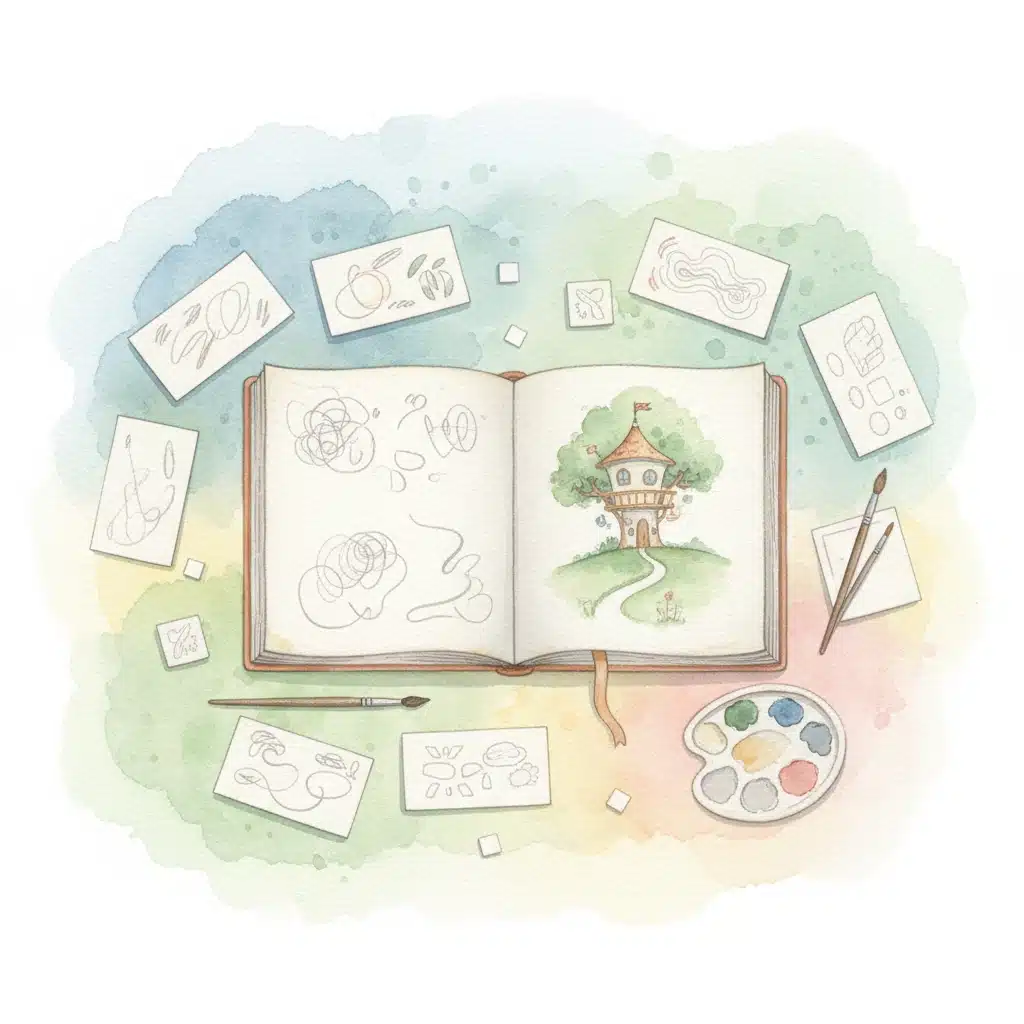Let’s get one thing out of the way:
You absolutely do not need to be an illustrator to make a picture book.
But you do need a plan.
Illustration isn’t just about making things pretty. It’s about pacing, page turns, emphasis, and clarity. Whether you’re hiring an artist or designing your own book: especially if you’re creating SEL books for kids or children’s books about emotions: it’s incredibly helpful to create a rough visual map of your story first.
Enter: the storyboard.
What’s a storyboard?
It’s a low-stakes, rough sketch version of your picture book that shows what goes on each page.
It doesn’t need to be detailed. It doesn’t even need to be drawn well.
Mine are often stick figures, arrows, and text boxes in Canva. That’s more than enough.
The point isn’t perfection: it’s clarity.
You’re thinking about:
- What happens on each spread
- Where the text should go
- What the reader should feel at each moment
- Where to place strong page turns
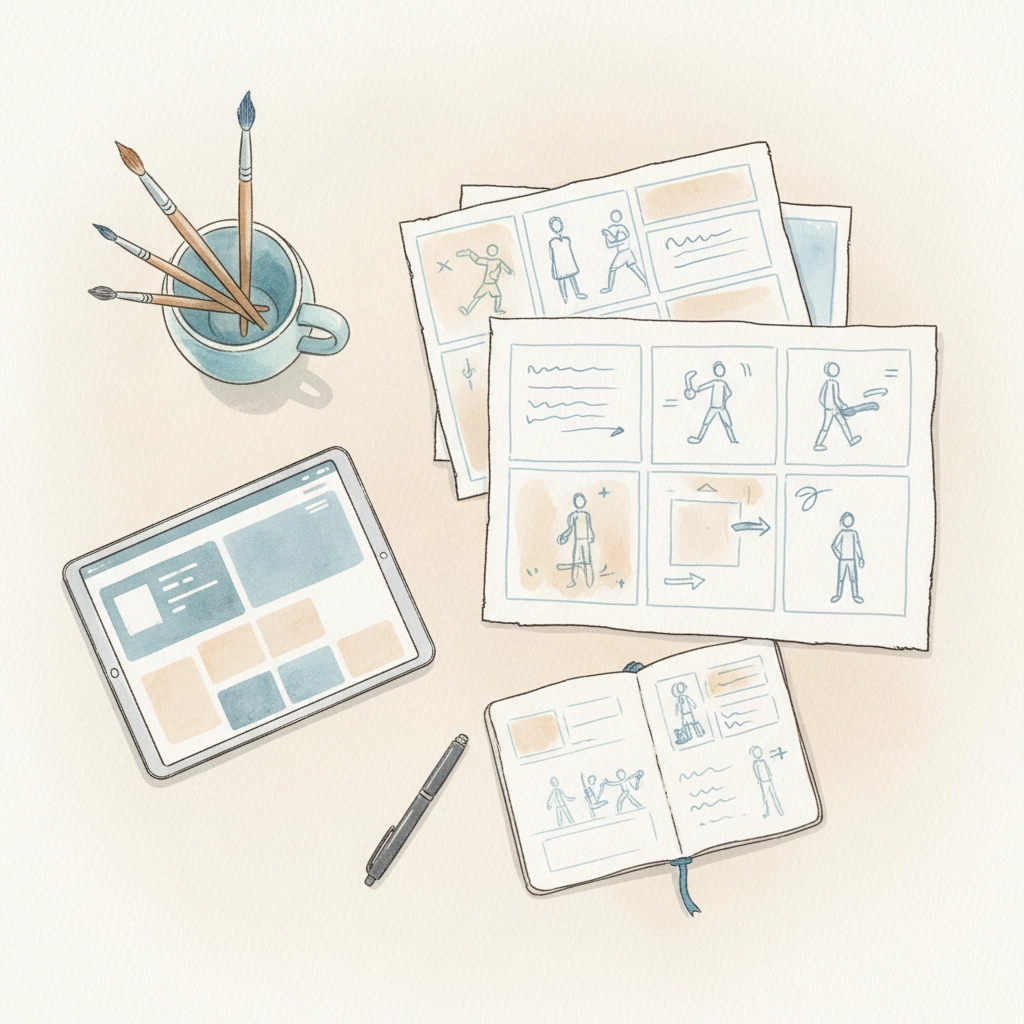
Why storyboarding is essential
Here’s what it helps you do:
- Fix pacing problems early (before spending money on art or layout)
- Visualize rhythm and page turns
- Catch missing beats in your plot
- Give clear direction to an illustrator
- Decide where to cut or expand text
It doesn’t need to be complicated.
This is especially crucial for mission-driven professionals creating social emotional learning books, children’s books about mental health, or books about mindfulness for children: where emotional pacing and visual storytelling work hand-in-hand to support young readers.
Tools you can use (no artistic skill required)
Canva – My personal go-to
- Make a 32-page presentation file
- One slide = one page or spread
- Add your text boxes
- Drop in stick figure sketches or image placeholders
PowerPoint or Google Slides
- Same idea, use a slide deck as your page layout
- Super easy to move pages around
- Great for collaboration if you’re working with an illustrator
Pen + paper
- Fold a few sheets of paper in half and sketch it out
- Number the pages
- Keep it messy: it’s just for you
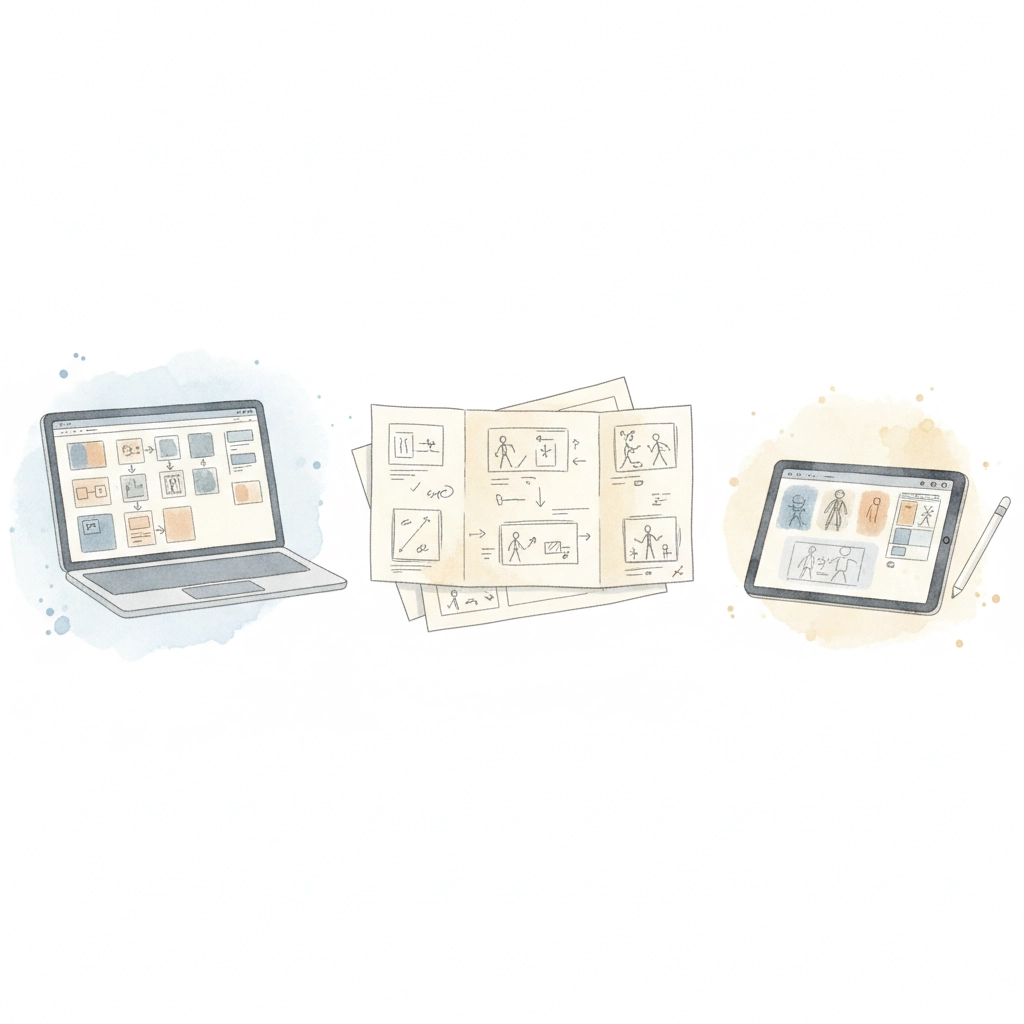
What to focus on when storyboarding
One major action per page or spread
Too many things at once = visual chaos
Balance between text and image
If you describe something in the text, maybe you don’t need it in the image: and vice versa
Page turns that do something
Use them for surprises, emotional shifts, or to create anticipation
Scene shifts
Each new scene or emotional beat usually deserves its own spread
This is particularly important when creating books for therapists to use with kids: each spread should serve a purpose in the therapeutic or educational journey.
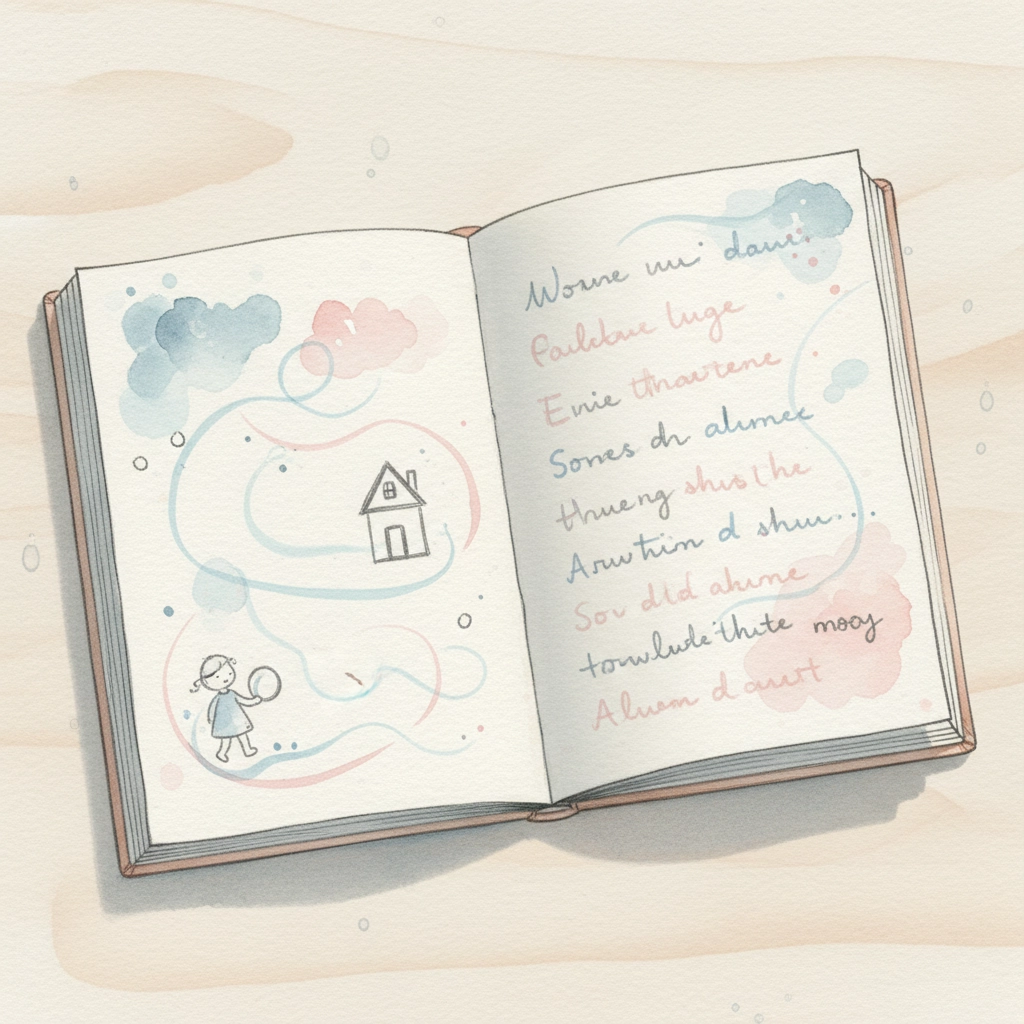
Bonus tip: Don’t forget the non-story pages
Picture books are usually 32 pages, but only 24–28 of those are story content.
You’ll likely also include:
- Title page
- Copyright page
- Dedication
- Author bio
- Back matter (activities, notes, etc.)
Factor those into your layout before you start sketching.
For books for parents about SEL or books for educators SEL, consider including helpful resources in your back matter: discussion questions, activity suggestions, or additional learning opportunities.
You don’t have to draw well. You don’t need fancy software. You just need a plan.
If you’re stuck, try sketching one scene from your book: whatever pops into your head first. You might be surprised how much it unlocks.
Whether you’re developing children’s books about emotions, mindfulness resources, or any story meant to support young readers, visual planning helps ensure your message lands with maximum impact.
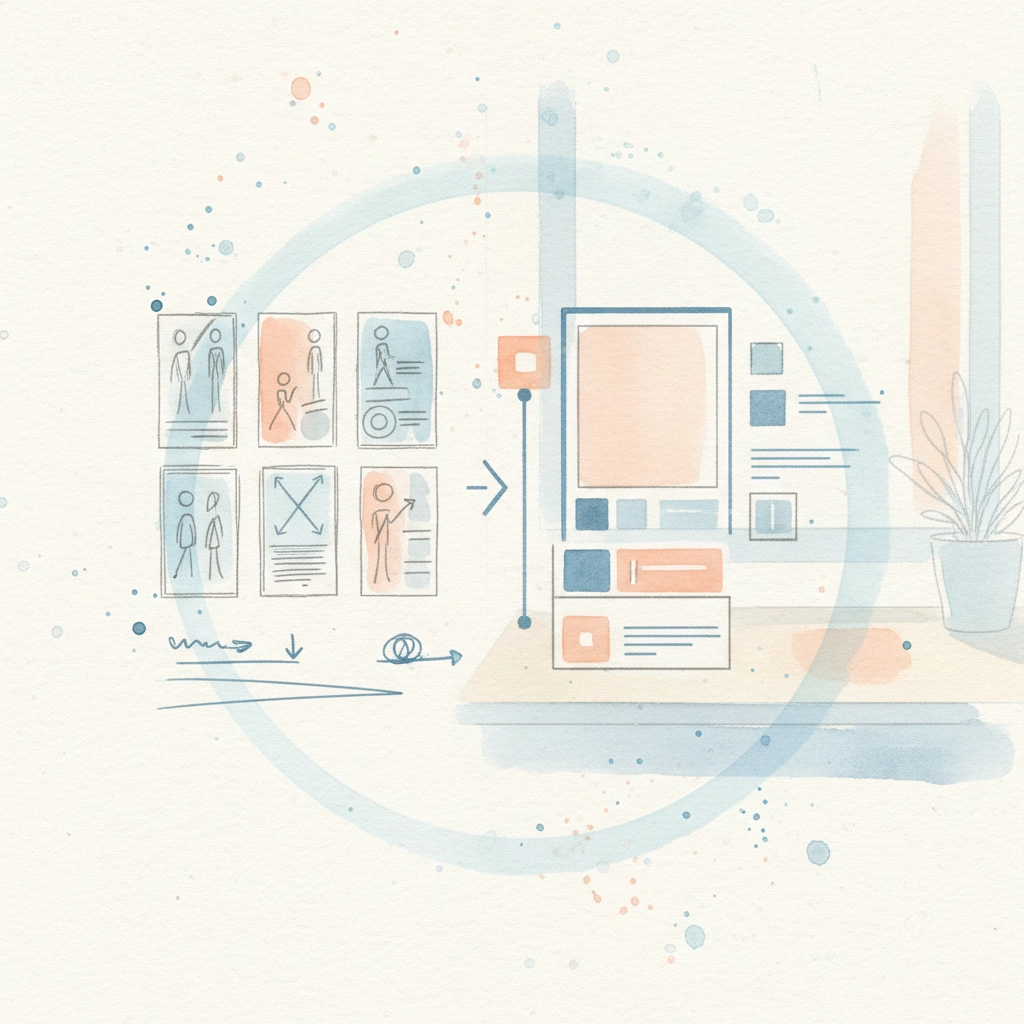
How do you feel about storyboarding?
Ever tried it? Still avoiding it? Drop a comment: I’d love to hear how you’re thinking about your book visually, and how I can help you to get started.
P.S.
If you’d like a peek at how I storyboard in Canva: or want a template to get started: book a free 30-minute call with me. I’ll walk you through my process and share my template.
Ready to bring your picture book vision to life? At Garden Wolf Publishing, we work with mission-driven professionals to create meaningful children’s books that make a difference. Get in touch to learn how we can support your publishing journey.

